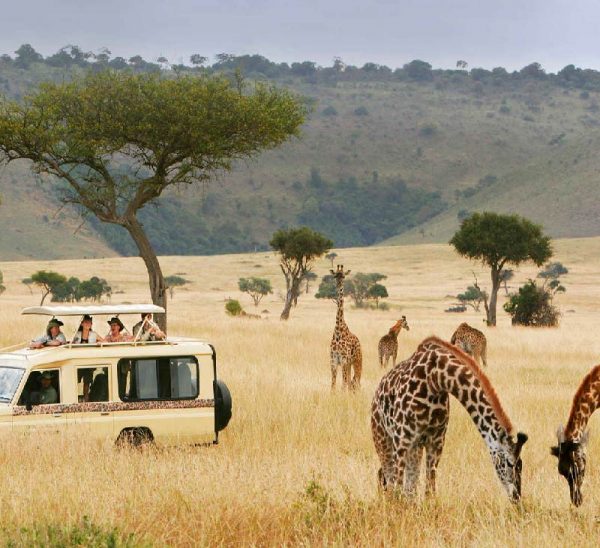Rift Valley Lakes
The cliffs of the Rift Valley northwest of Nairobi hem in a classic East African landscape of open savannah studded with jagged volcanic outcrops and strung with beautiful lakes. Large mammals are less prolific than in the bigger terrestrial parks like the Masai Mara or Amboseli, but the area is renowned for its breathtaking scenery, serene surroundings, and lush habitats that support prolific birdlife. Included within this fascinating landscape is Kenya’s lake system (comprising the three interlinked lakes of Bogoria, Nakuru and Elementaita), which collectively is considered the single most important foraging site for the lesser flamingo anywhere, and a major nesting and breeding ground for great white pelicans
Lake Naivasha:
Lake Naivasha is known as a world-class birding destination. The waters of the lake draw a great range of games to these shores. Giraffes wander among the acacia, Buffalo wallow in the swamps and Colobus monkeys call from the treetops while the Lakes large hippo population sleep the day out in the shallows.
Afternoon wind and storms can cause the Lake to become suddenly rough and produce high waves. For this reason, the local Maasai christened the lake Nai’posha meaning ‘rough water’.
The region surrounding the lake is well worth exploring and offers interesting experiences including crescent island, crater lakes and Hell’s gate national park, which is one of the last places in East Africa where one can walk or bicycle unguided through herds of plains wildlife
Lake Nakuru:
Lake Nakuru provides the visitor with one of Kenya’s best-known images. Thousands of flamingo, joined into a massive flock, fringe the shores of this soda lake. A pulsing pink swathe of life that carpets the water, the flamingo is a breathtaking sight.
Nakuru has more than just flamingos. This is a major National Park and an important sanctuary for Rhino. Both Black and White Rhino are found here and are often seen resting under acacias by the Lakeshore.
This is one of your best chances of seeing Leopard in Kenya, and there are several large prides of Lion.
Lake Turkana
Lake Turkana is a massive inland sea, the largest desert lake in the world. This single body of water is over 250 kilometers long- longer than the entire Kenyan coast. It is widely known as the Jade Sea, because of the remarkable, almost incandescent, colour of its waters.
Turkana has one of the longest living histories on earth, and recent fossil evidence unearthed at Koobi Fora has led to the Lake being referred to as ‘The Cradle of Mankind’. The site lies at the heart of the Sibiloi National Park, a place of stark beauty and prehistoric petrified forests.
The Lake itself is a natural treasure, with the world’s single largest crocodile population. In Turkana, these reptiles grow to record size, with some of the largest specimens found on remote windswept Central Island.
Lake Turkana is Kenya’s most remote destination, but one that repays the intrepid traveler with rich rewards.
Lake Victoria:
At Kenya’s Western frontier lies the great expanse of Lake Victoria. This massive lake, commonly known as Nyanza, is twice the size of Wales and forms a natural boundary between Kenya, Tanzania, and Uganda.
The lake is the heart of the African continent, the source of its mightiest river, the Nile. This mighty body of water is rich in fish life, with shimmering shoals of colorful cichlids and large Nile Perch.
Fishing brings many visitors to this lake, mainly in search of the Nile Perch, considered a world-class game fish.
Lake Baringo:
Freshwater Lake Baringo, ranks among the top birding destinations in Kenya, with 500-plus species recorded in the immediate vicinity, notably such northern dry-country specials as white-crested turaco as well as Hemprich’s and Jackson’s hornbill. The lake has no obvious outlet; the waters are assumed to seep through lake sediments into the faulted volcanic bedrock.




